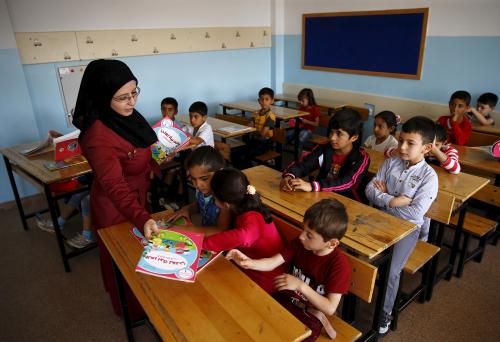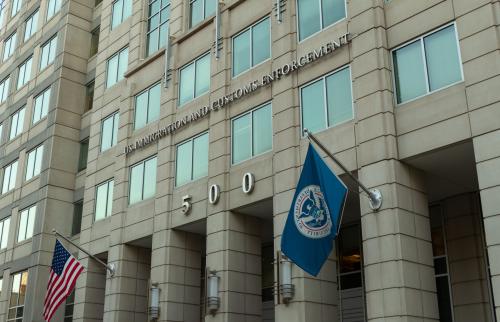Seven years into the Syrian crisis, over half the country’s population has been forcibly displaced. Of the world’s 25 million refugees, over 6 million of them are from Syria—mostly in neighboring Jordan, Lebanon, and Turkey. Syrians are also one of the largest populations of Internally Displaced Peoples (IDPs)—accounting for more than 6 million of the world’s 40 million IDPs. Many have been subjected to numerous displacements and within Syria have seen deliberate and systematic targeting of health facilities, overwhelmingly by the Syrian government and its allies.
Refugees often have complex medical problems including physical injuries and psychological trauma. In host countries, they often face poor housing and sanitary environments, difficult labor conditions, inadequate nutrition, and inaccessible medical care. The most prevalent ailments are skin, digestive system, and respiratory diseases as well as trauma-related mental and psychiatric disorders. In addition, as a lower-middle-income country with a stable middle class, many Syrians have chronic health conditions including hypertension, diabetes, and cancer.
Negative coping mechanisms such as child labor, child marriages, etc. add to the burdens facing refugees, preparing the ground for intergenerational transmission of vulnerabilities. These challenging conditions mean that diseases like polio that had been formerly eradicated, have had outbreaks which, though contained, underline the inherent risks. There are also challenges around ever more drug resistant strains of tuberculosis spreading with tuberculosis having already increased within Syria and neighboring countries.
In all three host countries, economic headwinds signal further problems for the health of refugees.
Jordan is struggling with tough political and economic conditions. During the initial Syrian refugee influx, the Jordanian government allowed registered refugees free access to public primary health care centers and to hospitals. However, by November 2014, overwhelmed by the numbers, Syrians were required to pay the non-insured Jordanian rate—approximately 35-60 percent of what foreigners paid. In March 2018, as economic difficulties mounted, health care costs increased two to five-fold for refugees. A hospital birth went from $85 to $338 and a C-section from $338 to $845. While some assistance from the UNHCR and others is available, 80 percent of refugees live below the poverty line, and therefore significant funding increases are needed to avoid the erosion of health care.
A further burden has been the U.S. decision to slash $300 million in aid to United Nations Relief and Works Agency (UNRWA), the agency supporting Jordan’s more than 2.1 million Palestinian refugees. UNRWA has 25 primary health centers handling 1.5 million patient visits a year. While support to Jordan has come from the World Bank and others, the health system is under strain and sustained multi-year assistance is needed.
In Lebanon, the United Nations High Commissioner for Refugees (UNHCR) pays 85 percent of primary health care costs for refugees. Support also comes from local and foreign NGOs, the World Bank, and others. Secondary and tertiary health care institutions are mostly private, and cost is a significant barrier for Syrian refugees, 70 percent of whom live below the poverty line. The UNHCR supports access to life-saving and obstetric care. Costs covered by UNHCR vary by service and the refugees’ vulnerability status. The UNHCR has a network of 40 hospitals to which it refers patients with 83,000 referrals in 2017, up from 74,000 in 2016. Of the referrals, 60 percent were for maternity care. The average cost for all referrals was $642, versus $589 in 2016. Overall, the Lebanese system healthcare system has proven to be resilient but is highly dependent on outside funding for refugee care and remains vulnerable to economic downturns and donor fatigue. In the meantime, with significant slowdowns in tourism and construction and worries over the banking sector, economic headwinds are at play while a government has yet to be formed months after the May elections.
In Turkey, registered Syrian refugees, a significant majority, have the right to become individual holders of health insurance. Refugees have access to free primary health care via family health care centers, counseling centers, tuberculosis dispensaries, and migrant polyclinics. Secondary and tertiary health services are also available free, but some medicines and outpatient services require co-payments. These pose a challenge to refugees since 67 percent live below the poverty line. There is a significant language barrier and translation services remain inadequate. Registration is an issue as refugees move often making access to health care problematic since the right to health care only applies to cities where refugees registered. Turkey allows Syrian medical professionals to practice and in 2017 some 1006 Syrian doctors, 636 nurses and over 300 translators were in training or had graduated to work with refugees. The EU, WHO, and others provide support to refugee health care. However, Turkey’s slowing economy and a looming recession could pose further challenges.
What is clear is that local health issues can quickly become a regional and eventually a global crisis. While there have been varying degrees of success in providing health care to refugees, now is not the time for the international community to lessen its support or for the host countries to reduce costs that could result in a health care crisis. That would only further inflame local tensions, possibly leading to more displacements.
The Brookings Institution is committed to quality, independence, and impact.
We are supported by a diverse array of funders. In line with our values and policies, each Brookings publication represents the sole views of its author(s).






Commentary
The challenges in providing health care to Syrian refugees
November 15, 2018